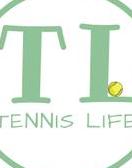
A couple of days ago, I was talking with my friend and co-blogger Jane Forman and she was telling me about an incident that happened with her 3.5s in the USTA Tri-Level Doubles League. Apparently, the opponent served while the #TeamForman player had her back turned...and what do you think happened next? Or should I say, what SHOULD have happened next?
Of course, an argument broke out (one of many throughout the match.) The opponents claimed it was their point because the USTA rule states that you must play at the pace of the server or lose the point, and #TeamForman said that you can't serve when the receiver's back was turned or it's a let. The squabbling got so loud that the other 2 lines couldn't play and had to stop until things quieted down.
The opponents wouldn't budge on their stance, and because they didn't know the rules either, #TeamForman was eventually bullied into letting them have the point. However, if any of these ladies would have known the rules or had the handbook in their bags, they would have found out what to do without all the drama, which was partially to blame for #TeamForman ultimately losing the match.
Rule 21 in the ITF (International Tennis Federation) handbook regarding serving states:
RULE 21. When to serve and receive: The server shall not serve until the receiver is ready. However, the receiver shall play to the reasonable pace of the server and shall be ready to receive within a reasonable time of the server being ready. A receiver who attempts to return the service shall be considered as being ready. If it is demonstrated that the receiver is not ready, the service cannot be called a fault.
The opponents were half correct in that the receiver should play at the REASONABLE pace of the server, however, Team Forman was obviously not ready to receive so the point should have been re-played.
Another rule also applies in this situation:
RULE 22. The let during a serve: The serve is a let if:
a. The ball served touches the net, strap or band, and is otherwise good; or, after touching the net, strap or band, touches the receiver or the receiver's partner or anything they wear or carry before hitting the ground; or
b. The ball is served when the receiver is not ready. In the case of a service let, that particular service shall not count, and the server shall serve again, but a service let does not cancel a previous fault.
The second scenario clearly applies in this instance.
I cannot stress enough that it's beyond important to be familiar with the ITF rules and to have them in your bag at all times. Ignorance, incorrect assumptions and the drama they can cause really can cost you (and your teammates that have to listen while they play) the match!

